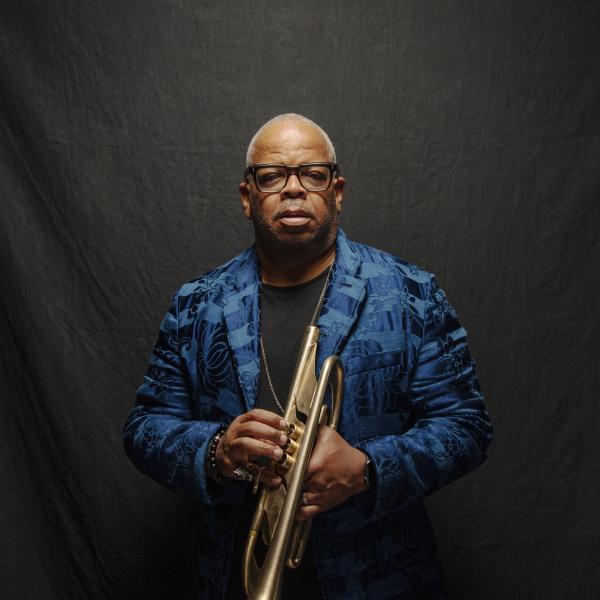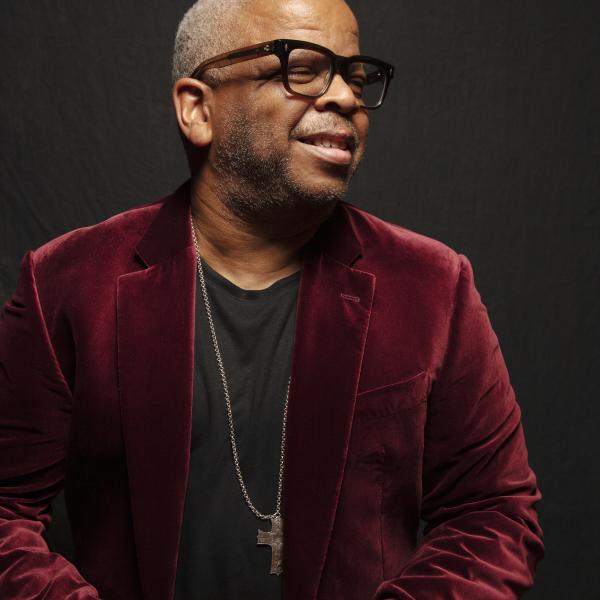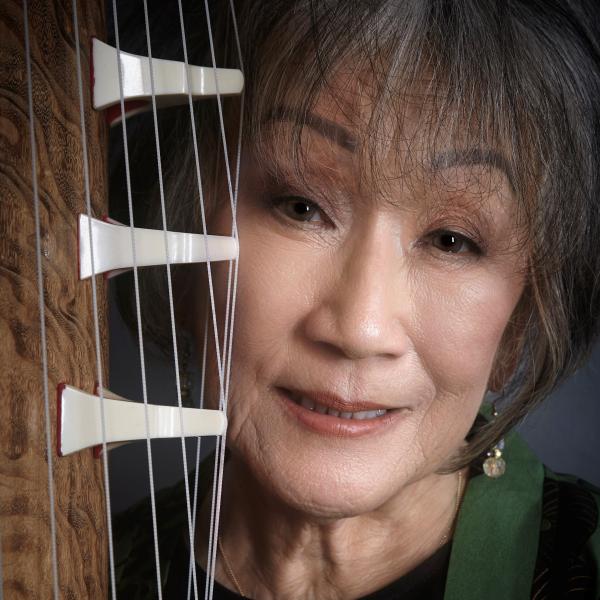Quick Study: October 20, 2022
Jo Reed: Welcome to Quick Study, the monthly podcast from the National Endowment for the Arts. This is where we’ll show stats and stories to help us better understand the value of art in everyday life. Sunil Iyengar’s the pilot of Quick Study. He is the director of research and analysis here at the Arts Endowment. Hello, Sunil.
Sunil Iyengar: Hi, Jo.
Jo Reed: So, what’s on the docket for today?
Sunil Iyengar: Yeah, well, today, instead of talking about a single research study in detail, I thought we could maybe look at the very concept of research into the arts, and maybe talk about differences in methods used. So are you ready for a meta episode, Jo?
Jo Reed: I actually love meta conversations--
Sunil Iyengar: <laughs> That’s good.
Jo Reed: -I'll be honest with you. <laughs> The whole idea of research into the arts is a very interesting one, and sometimes a fraught one.
Sunil Iyengar: Right, and I know this is a short podcast, so I'll just go <laughter> over some things that really leapt out at me. Well, so, this idea of talking to you about this came about because over the last few days, Jo, I've had the pleasure of speaking at or attending various events about research practice and policy, whether it’s the arts and health, arts and education, or even the arts and resilience among military and veteran populations. In each event, as it turns out, the discussion veered into something our chair, Dr. Maria Rosario Jackson, calls different ways of knowing.
Jo Reed: Well, parse out what the chair means when she says different ways of knowing. That can mean many different things to many different people.
Sunil Iyengar: Sure. So we’re talking, in a way, about epistemology, right, or theory of knowledge behind what we mean when we say research in the arts. So I'm just going to sum it up this way, in the social sciences, we rely for a large part on both quantitative and qualitative methods, using the scientific method to collect, analyze, and interpret data about phenomena. But typically, the kind of research that tends to drive policy decisions has been grounded in statistics, in sort of the quantitative side, as you know. You've heard me say a lot before in previous episodes about research design, such as randomized control trials that attempt to show cause and effect.
Jo Reed: That, of course, can be really tricky when it comes to the arts, and measuring its impact on people.
Sunil Iyengar: That’s exactly right. So, now, in the arts, those methods, sometimes the steep difficulty of mounting those kinds of studies, and collecting that kind of data about something so multi mobile as the arts, sometimes that’s been viewed as a barrier to generating social change, or support for arts ecosystems, nationwide. So, there’s a longstanding debate, some would say maybe even going back to the ancients, as to whether artistic, creative, and cultural dimensions can be measured with numbers, and whether we can construct anything like a value proposition with numbers alone. So in this debate, I think the answer’s more or less settled. I mean, the answer is no, we can’t communicate the full range of arts and cultural vitality in the nation, or in communities, or even on an individual level with numbers alone. Now, that may seem a little counter to what you’ve heard me say <laughs> before, Jo. I’m the research director here,
Jo Reed: I was about to bring up, yes, that you research into the arts. Go on, carry on, please.
Sunil Iyengar: Yeah, right. This isn’t a subtle subversion here or something. I do believe actually, as a research director, that most things can be measured in some way. If we don’t know how to measure it, it’s because we lack the instrumentation, or the theories to develop that instrumentation. But let me just go further, oftentimes we speak of stories, photos, or videos, and so-called anecdotes as being supplemental to statistics, you know what I mean? Like typically, in reports you’ll see photos, or maybe a little vignette or something, to put what’s called a human face on these things. By the way, I don’t like that cliché, by <laughs> the way, you would “Put a human face on something.” <laughter> I mean, whatever kind of face are you going to put on it? On quantitative data, right? But what we’re seeing increasingly is heightened interest in having the riches of storytelling, or photography, or videography, or dance, or music, or theater, having those elements brought to the fore, to bear in the very act of data collection or interpretation. In other words, it’s a way of viewing artistic products and processes as central to the research enterprise, sort of coeval with other types of research methods in the social sciences. I just want to be clear, Jo, I mean, this merging of methodologies, traditional social science methods and artistic practice has a long way to go before we arrive at a place where we can say we have an acceptable threshold of evidence uniting both approaches to inform policymaking, but we’ve begun to see some hints of this in public discourse.
Jo Reed: Okay, let me interrupt. Can we unpack this a little bit, and can you talk a little bit more about this and give some examples, so I know what you’re talking about?
Sunil Iyengar: Yeah, absolutely. So I'm looking around, we and other federal agencies have supported research, actually, that treats the arts not just as the subject of research but also as a means of collecting or interpreting data. For example, AmeriCorps, that federal agency is supporting a study at the University of Nevada that’s using the qualitative research method called photovoice, which involves communities, and taking and interpreting photographs for the purpose of analysis. In this case, they’re working with high school students, investigating complex problems due to environmental injustice and climate change. But most recently, the NEA has awarded a grant to researchers at Providence College in Rhode Island to use photography, again, and stories, to illustrate and examine the role of arts and artists in responding to the COVID-19 pandemic, in the city of Providence. Looking at things like how the identities and responsibilities of artists and community leaders have changed after a period of time, and how the arts can help communities reimagine the future. But there’s still other studies out there, and we’ve also seen the use of techniques such as Laban movement analysis, which is the analysis of dance patterns, typically in relation to factors such as psychological or social-emotional wellbeing.
Jo Reed: This is reminding me of the work that we’ve been doing through Creative Forces.
Sunil Iyengar: Yeah, right. I think, in fact, the most high-profile example of arts as research from an NEA perspective has been that research, through the initiative Creative Forces, NEA Military Healing Arts Network. The researchers, Girija Kaimal, Melissa Walker, and others, examined a series of masks that were created by service members suffering traumatic brain injury. So the team identified key themes that surfaced in the artwork, and they coded these themes for the purpose of comparing them with clinical measures of post-traumatic stress, depression and anxiety in service members. You can find that study on the Creative Forces National Resource Center, for those of you out there, Creative Forces NRC dot arts dot gov. The results are really fascinating. I’ll just mention, finally, that our sister agency, the National Endowment for the Humanities has supported pioneering work in the digital humanities, which is a field that often applies sophisticated algorithms to measure different aspects of textual content and narrative. So that definitely should be taken into account as well. But you know, Jo, it’s important to note that of all the arts research methods I've given, and many others, all of these can be used to strengthen quantitative data collected or analyzed in other ways. Almost without exception, the types of data collected through arts-based research methods can be converted into quantitative data. So just as we often say the arts are not frill, the same could be said for these methods in relation to their social scientific counterparts.
Jo Reed: It would seem that this approach actually broadens not just the research but who participates in the research.
Sunil Iyengar: Yeah, and kind of prepping for this conversation, I was asking myself “Well, why else are these methods important?” If we’re not satisfied oftentimes with some of the traditional quantitative-driven studies alone, and we also acknowledge the need for qualitative data, but how can arts-driven methods help? Well, I think they give an opportunity for artists and communities to engage directly with research. You would think that research about the arts would be useful to engage not only community members who benefit from them but also artists and artmakers. It really reflects diverse voices wherever they can enrich hypotheses, data collection analysis, interpretation, and reporting. Lots of things have been said, as you know, Jo, about the differences between the arts and the sciences, but when you think about it, artists and researchers share the following traits. I mean, they’re curious, they explore and innovate, but they also like to slow time down so we can encounter things more fully.
Jo Reed: I like that, slow time down so we can encounter things more fully. That's really a kind of lovely way to look at it. We forget to do that. We’re just rushing onto the next thing and taking that moment is really important. Sunil, thank you, I really look forward to hearing more about this.
Sunil Iyengar: Appreciate it, Jo. Thanks.
Jo Reed: That was Sunil Iyengar, he’s the director of research and analysis here at the Arts Endowment. This has been Quick Study. The music is “We Are One” from Scott Holmes Music. It’s licensed through Creative Commons. Until next month, I'm Josephine Reed. Thanks for listening.
In this episode, we consider “different ways of knowing”: how arts-based research can inform our understanding about—well—the arts.




